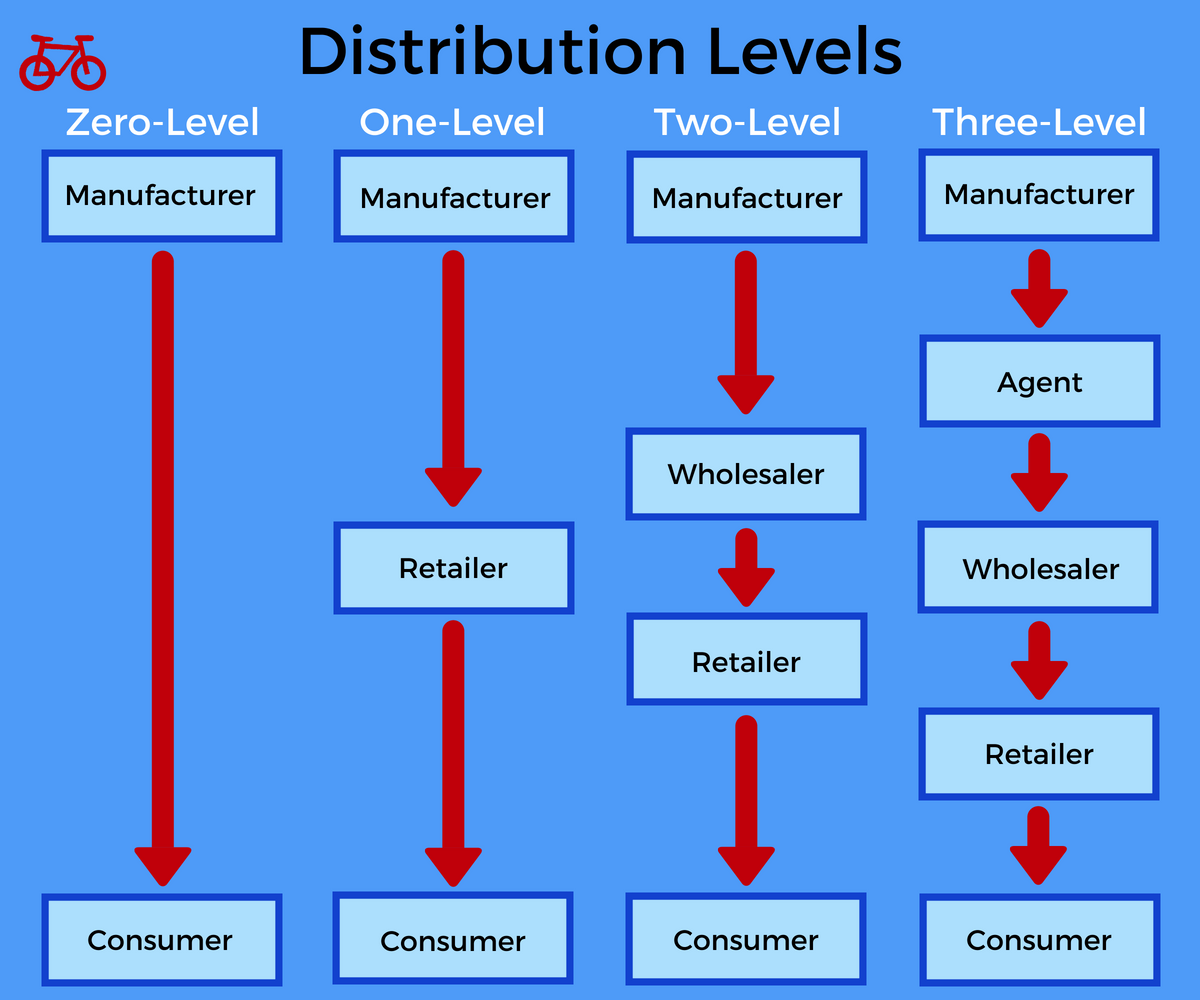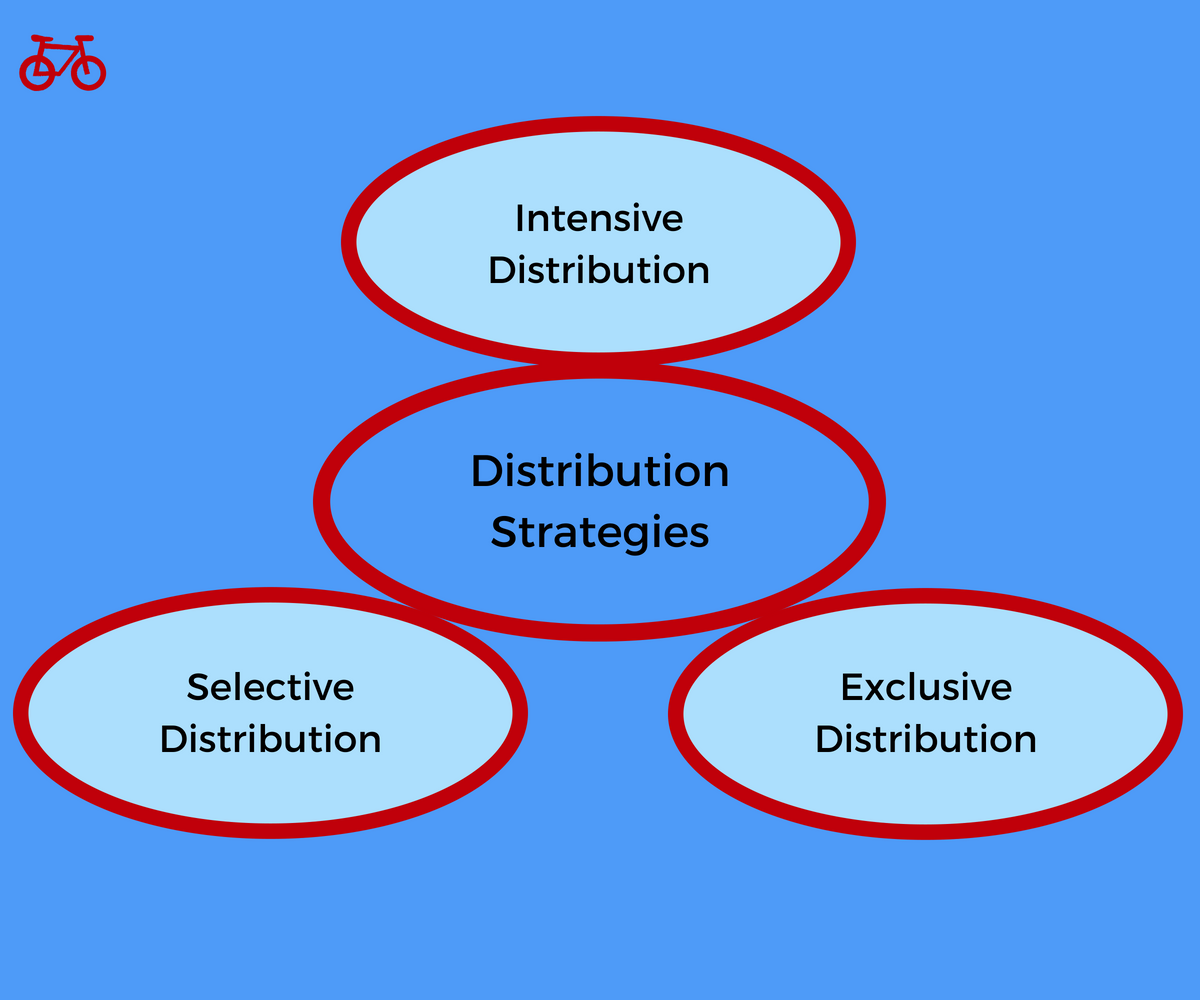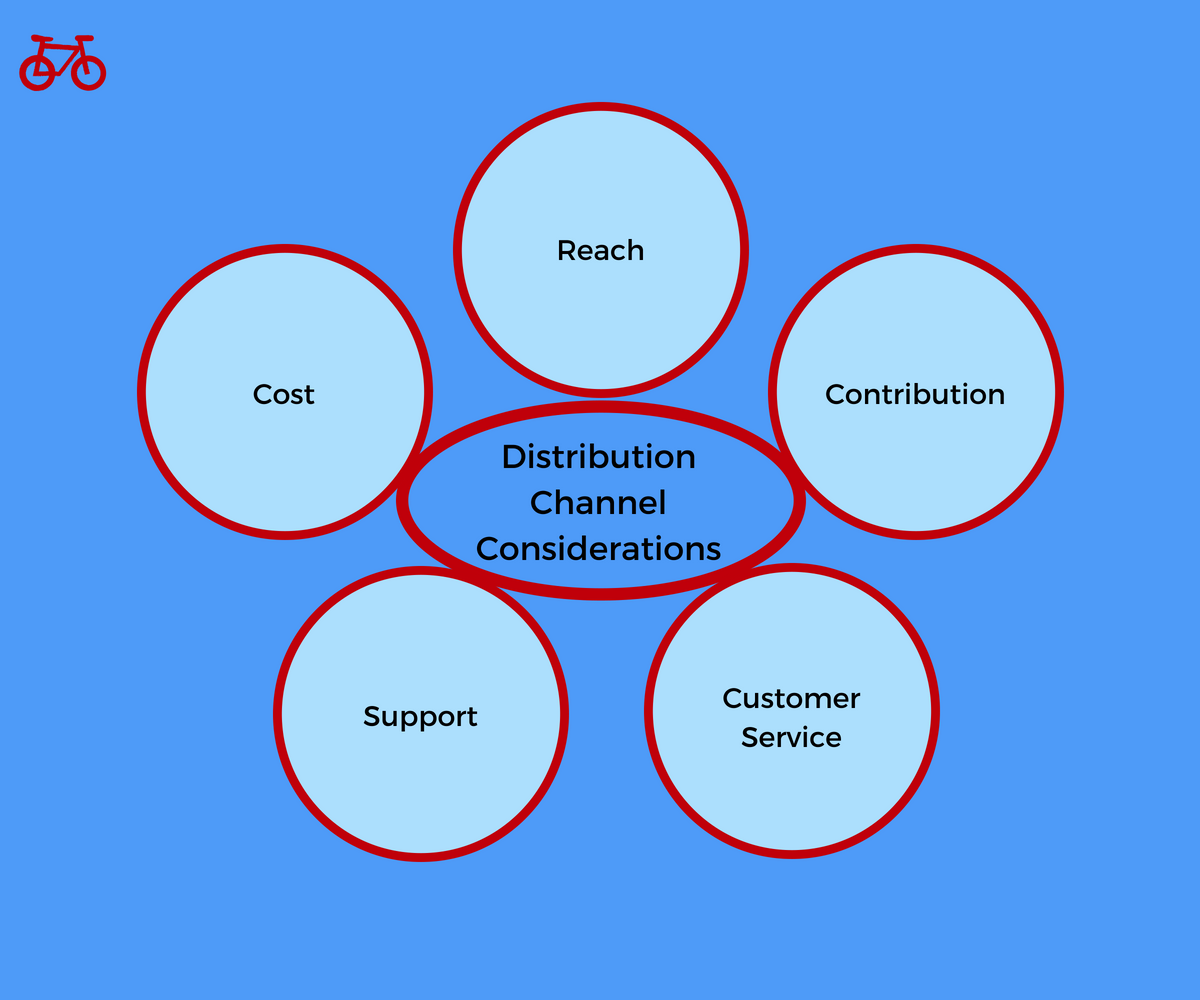Place is the logistics P in the marketing mix. It is the component that gets our product in front of our customers.
Place can be considered placement or distribution. Simply put, it is your distribution strategy. But, is probably one of the most difficult P’s to setup. It is about logistics, there are a lot of moving parts, and it takes time and energy.
That’s why we are going to spend some time going over the place component of the marketing mix. Here, we provide an overview of place.
The Objective of Place
The objective of the place component in the marketing mix is to ensure your products are available in the right place, at the right time, and in the right quantities.
Thus, the best place strategy is the distribution strategy that delivers the product your customers want, at the location they want it, and the time they want or need it.
That being said, we are going to look at everything you need to know about place in the marketing mix.
A better name might be distribution.
What is Place?
Place, as it pertains to the marketing mix, is the movement of a producer’s goods to the producers intended user. It is the distribution of your products within the market.
Place can also be called placement or distribution, but all three terms are referencing the same component of the marketing mix.
Another way to think about place is that it is the point of sale.
Place encompasses everything about distributing your product to your users. That means channels, inventory, logistics, market coverage, location, and transportation.
What is Distribution?
Distribution is the more commonly used reference to the marketing mix component place.
Distribution is how you move your products within the market to ensure the largest number of people have access to using it.
With that, there are strategies, tactics, channels, and considerations we will explore in detail.
What are Distribution Channels?
Distribution channels are the structure intermediaries – or lack of intermediaries – that goods and services use to move from the producer to the end user. This forms a chain, or a channel, that consists of intermediaries like wholesalers, retailers, distributors, and agents.
Within the distribution channel, each intermediary plays a role in moving the product closer to the end user. And with each role, each intermediary puts a price markup on the product.
There are various types of distribution channels and understanding them can lead to choosing the correct one for your business.
Types of Distribution Channels
There are four types of distribution channels. Each is used for specific purposes, they have their own objectives, and there are pros and cons to each of them.
Below are the various types of distribution channels.

Direct Distribution
Direct channel distribution is where a producer is selling their good directly to their end users. In this distribution strategy, there are no intermediaries used.
To get products from the producer to the user, it is common to use a manufacturers sales force or the internet, such as eCommerce, to get products to the end users.
Indirect Distribution
Indirect distribution is where a producer is selling their goods through a chain of intermediaries. This is the type of distribution channel that is going to contain wholesalers, distributors, or retailers. A company can use all or some of these intermediaries.
With indirect distribution, there are various levels within the chain, which we will take a look at later.
Dual Distribution
Dual distribution is a less common form of distribution channel. In this structure, the producer will use multiple channels of distribution.
Such as, they will sell direct to end users for domestic end users and they will use various intermediaries for selling to international end users.
Reverse Channel Distribution
Reverse channel distribution is specific form of distribution, which moves products in the reverse direction. Meaning, from the user back to the manufacturer.
This is a common form of distribution in recycling and the refurbishment of old, broken, or outdated products.
Depending on which type of distribution channel you decide to use, this will determine the intermediaries. You can choose the type of intermediary, how many, and whether you will need to use intermediaries at all.
What are Intermediaries?
Intermediaries are the middlemen who help facilitate the distribution process. They are specialized in a specific area of the distribution chain, and by being specialists and experts, they provide a critical role to the distribution of products.
The role of the intermediary is to ensure the movement of products from the producer to the end user.
There are various types of intermediaries and each intermediary in a distribution channel is a stopping point in the supply chain. They charge a price for their service, which will affect the final price the consumer pays.
Below we discuss the different types of intermediaries.
Types of Intermediaries
Depending on the channel of distribution, and how you structure that channel, will depend on what, and how many, intermediaries you use.
There are four common intermediaries, and one not so common, which make up the five types of intermediaries. The following are the five types of intermediaries.

Agent
Agents, or brokers, are distribution channel intermediaries who operate as an extension of the producing company. They become the primary selling channel of a company when an agency relationship has been established for the selling of a product.
An agent can also be referred to as a rep, or a distributor if they are the primary vehicle for selling a product in a specific market.
An agent distribution intermediary is common when a company is operating in international markets.
Wholesaler
Wholesalers are intermediaries who breakdown products in the distribution chain. Typically, they purchase products in bulk, then break them into smaller quantities to move the product to the next intermediary in the distribution channel. This is most often a retailer.
A wholesaler will take ownership and possession of the products they purchase. They store the products they purchase. Wholesalers also carry competing products.
Distributors
Distributors are intermediaries who, like wholesalers, take ownership and possession of the products they move along the distribution chain. A distributor is responsible for the warehousing and reselling of the products they purchase. And, a distributor will not carry competing products lines.
One of the key differentiators between a wholesaler and a distributor is the product lines they carry. A wholesaler will carry competing product lines, whereas a distributor will not.
Retailers
Retailers sell products directly to end users. They take ownership and possession of the products they sell, as well as warehouse them. They purchase their products from other channel intermediaries. Which can be wholesalers, distributors, or producers.
Retailers vary widely in size. They can be small, independently owned stores. Like a “mom and pop” shop. Or, they can be large national or international chains. Like Target (U.S.), Saturn (Germany), or Tesco (U.K).
Jobbers
Jobbers are a less common intermediary, but it includes the category of sub-contractors and tradesmen and women who deal with small lots of goods.
This is a type of wholesaler or distributor. Typically, a jobber will not deal directly with the producer of the products they sell.
The various types of intermediaries above can all be included in a distribution channel, or there can be just one or none included. A lot depends on the products and how the end user expects to receive those products.
The Levels of Distribution
There are four levels of distribution, which is how many intermediaries a distribution channel contains. These levels make up both direct and indirect channels of distribution.
Below are the four levels of distribution.

Zero Level Distribution
Zero level distribution is a direct channel of distribution. This level of distribution uses no intermediaries to help distribute products.
Thus, zero-level distribution is the producer selling directly to their end user.
One Level Distribution
One level distribution is the first level of distribution to become an indirect channel. This is a level of distribution which uses one intermediary. In one level distribution, the single intermediary used is a retailer.
Thus, a producer is not using an agent, wholesaler, or a distributor to move their products to the end user.
Two Level Distribution
Two level distribution is the level of distribution which introduces at least two channel intermediaries. This distribution model has a producer, a wholesaler or distributor, and a retailer.
Thus, the producer is moving product to the end user through two levels of intermediaries.
Three Level Distribution
Three level distribution is a channel design which takes two level distribution and adds an agent intermediary to the mix. Within three level distribution, the use of an agent helps the producer to contact wholesalers.
This is particularly useful in international markets, where a producer may not speak the local language to contact wholesalers. Or, there is little knowledge of the local market in order to contact wholesalers. Thus, an agent is introduced to help facilitate this process.
These four levels of distribution are all used to maximize market coverage for a producer. The next topic is the various distribution strategies used to achieve market coverage objectives.
What is a Distribution Strategy?
Distribution strategy is the company’s plan to move the product it produces into the hands of its intended users.
This is where the company takes all considerations in order to make the best distribution strategy decisions. The strategy will include levels of distribution, what channels to use, and how to manage those channels.
Like any strategy, there needs to be a basic understanding of all the components that will need to be addressed. We will address all these components below.
Types of Distribution Strategies
There three main distribution strategies. Each strategy has a focus on a different type of product. The following are the three distribution strategies.

Intensive Distribution
The intensive distribution strategy is approaching the market to place your product in as many places as possible. This is exactly as the name describes, intense.
This is a typical strategy for low decision purchases. Commodities or convenience products. Often, the products are low priced and can be impulse purchases.
This can look like many of the products in convenience stores, super markets, and department stores. It can also be the point-of-sale purchases you see at the check-out counter.
This strategy allows the products producer to be everywhere an end user may want to have the product.
Selective Distribution
A selective distribution strategy is one where you use a number of channel options, but not all of them. It is the middle of the road strategy, which sits between intensive and exclusive distribution.
This strategy offers a producer a wide range of control over the placement of their products. There is a cost efficiency associated with being able to choose the best channels and intermediaries to use. And, a producer is able to maintain great market coverage.
The selective strategy is a great strategy for products that need a certain level of control over where they are distributed.
Exclusive Distribution
An exclusive distribution strategy is one where a product producer has agreements with one intermediary in a given distribution channel.
This could be that a producer has an exclusive distribution agreement with a particular distributor or a retailer. But, there is just one intermediary responsible for the sale of the product in a given market.
Distribution Strategy Questions
Now that we understand the different distribution strategies, there are some questions we should ask ourselves.
We should ask:

- Where do buyers look for our products?
- Are our products available in the right place, at the right time, and in the right quantities?
- Should we use one or multiple channels?
- Should we distribute direct or indirect?
- How many intermediaries should we use?
- What types of intermediaries should we use?
- Are there any competing intermediaries?
Distribution Channel Considerations
When building our distribution channel, there are many things to consider. You should consider your product, market, customer, and many other factors.
We are going to take a look at a few considerations when creating an effective distribution strategy. Below are some common distribution channel considerations.

Reach
One of the first considerations of your distribution strategy should be the reach. That is, how will your product make it into the places where your end users expect to purchase your product.
The channels and intermediaries you choose will determine this factor.
Cost
Considering the cost of your channel will impact the profitability of your products. Remembering that each intermediary will take a fee, whether that is a margin or a commission.
Thus, how much each channel will cost is an important consideration.
Contribution
Contribution is thinking about how much a particular channel is going to contribute to overall sales.
This factor can determine how many channels you will use. You will have an overall sales target. Then, you can consider what the max sales a given channel can produce is. At times, it might be the channel can produce all your given sales. Other times, it can be that multiple channels are needed seeing as there is only so much a given channel can contribute.
Contribution is understanding how your channels will work together towards your overall sales goals.
Support
When working with various intermediaries, consideration of how you support them is critical.
This means how to control the quality of your product moving through the distribution chain. Also, support is needed to assist intermediaries in moving your product. That could be marketing activities to end users. It can also be education about the product.
Support can be the determining factor of whether your intermediaries provide you with the necessary sales effort for you to make your sales targets.
Customer Service
Customer service is about how you will support your customers. Whether this is repairs or general questions, end users will need support.
Also, this consideration can include who will be responsible. The producer, the intermediary, or a combination of both.
This is the consideration that will impact the perception of your product in the market.
When building a distribution strategy there are many critical factors for success. These are just a few important ones to get you started asking the right questions.
Place is a complex component of the marketing mix. There are many operational considerations. This is the component that most effects the operational side of marketing. Ultimately, getting it right is a system of testing and adjusting. With this overview, you should be armed with enough information to begin putting together your placement strategy.
